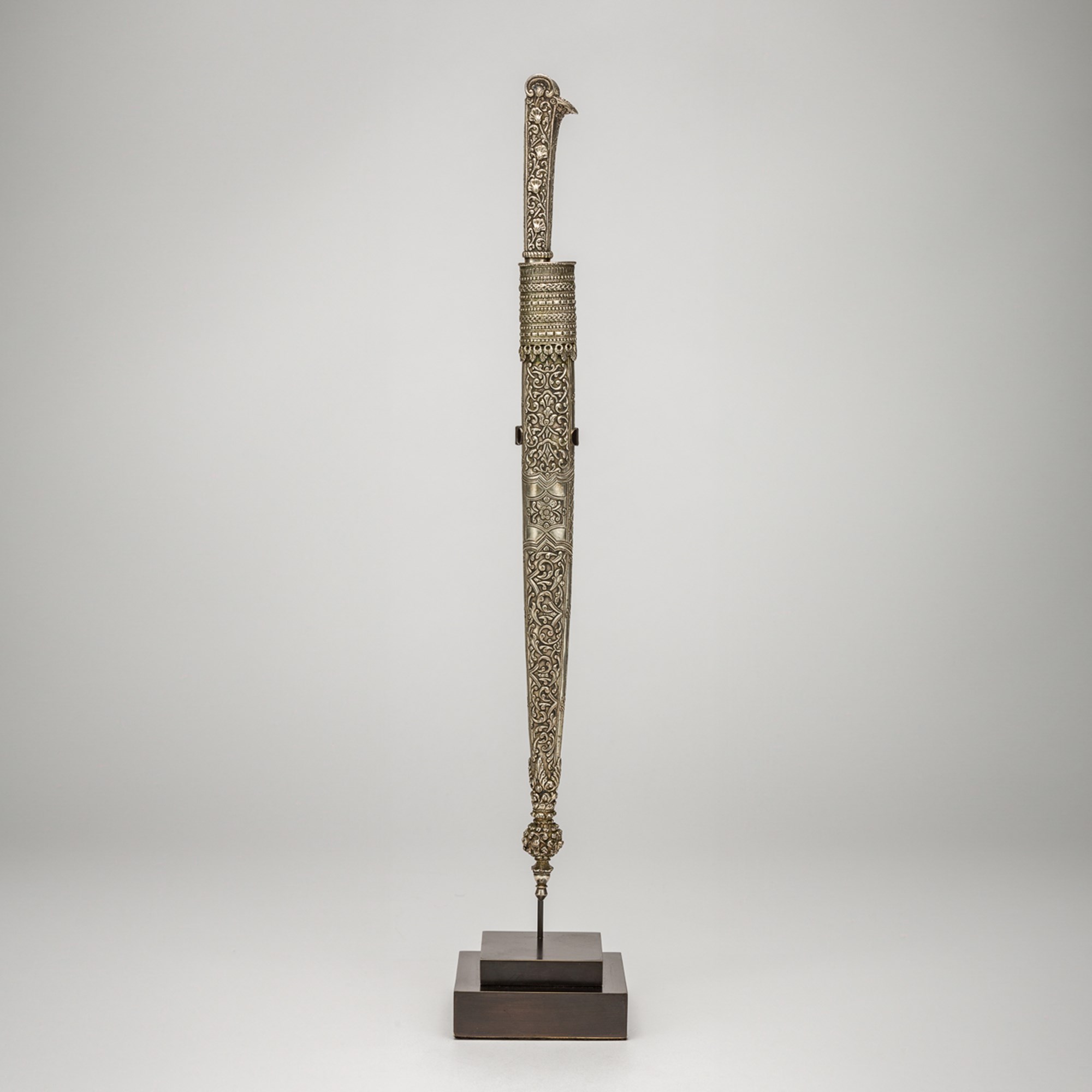Marketplace
Balkan Bichaq
With characteristic ears to prevent the gripless hilt from slipping out of the hand, this dagger takes the form of a miniature yataghan, sometimes known as a bichaq. The repoussé rococo ornament which decorates the silver scabbard, hilt, and grip plaque is a distinctive indicator of Balkan origin. Furthermore, the details of the ornamentation further narrow down its origin to Boka Kotorska (Bay of Kotor) in Montenegro. The bands of pattern around the throat, which terminate with a ring of high-relief palmettes, are seen on several weapons from this area. The cartouche at the mid-point of the scabbard, which holds a 6-petalled flower and breaks up the intricate split-palmette palmette decoration, is replicated in swords and daggers from Boka Kotorska. A sword held in the Maritime Museum of Kotor (accession no. 273), has similar decoration on its central suspension mount.1 Another large sabre from the same area, held in the Wallace Collection, London (accession no. OA1697), and dated to the 18th century, also has a comparable cartouche on its central suspension mount.
The scabbard of this bichaq terminates in large Greek-style palmettes, which lead into a finial composed of a ball and tear drop. This distinctive finial is seen on several other Montenegrin arms. These include a bichaq pictured in Bob Hales’ Islamic and Oriental Arms and Armour, dated to the late 18th century; a scabbard which fits two blades, housed in the in the Wallace Collection (accession no. OA1913), dating from c. 1800 Boka Kotorska; and a bichaq dated to 1793, made in Kotor and also held in the Wallace Collection (accession no. OA1711).2 This final example also shares the distinctive patterned bands at the throat, rococo ornamentation, and a central cartouche which breaks the decorative scheme of the scabbard.
The Bay of Kotor provides a unique mix of cultural influences. The earliest know settlements were founded by the Romans, later passing through the hands of Byzantine, Serbian, Bulgarian, and Hungarian rulers. Boka Kotorska was independent from 1391-1420, when fear of Ottoman invasion persuaded them to join the Venetian Republic. From 1483 to 1699, a power struggle between the Venetian Boka Kotorska and the Ottoman Empire played out, with the northern part of the pay falling to the Ottomans for some time. The Ottomans were defeated in 1699, and Boka Kotorska remained Venetian until 1797. During the period in which this dagger was made, the area changed hands many more times, falling under Austrian, Russian-backed Montenegrin, and French rule until 1813.3
1 Illustrated in Elgood, Robert. The Arms of Greece and Her Balkan Neighbours in the Ottoman Period. London: Thames & Hudson, 2009. Op. Cit. p. 84. Cat. 68.
2 Hales, Robert. Islamic and Oriental Arms and Armour. London: Robert Hales C. I. Ltd., 2013. p. 97, Cat. 228
3 Elgood. Op. Cit. pp. 72-72.
Plus d'œuvres d'art de la Galerie







 Untitled 2_T638206163538547978.jpg?width=500&height=500&mode=pad&scale=both&qlt=90&format=jpg)

